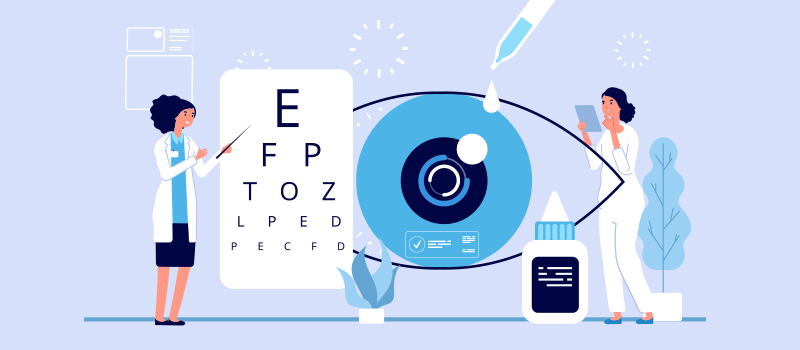What’s the Buzz
The Bee Healthy Blog
Horner’s Syndrome: Symptoms, Causes, & Treatment

Horner’s syndrome is a disorder that affects the eye and surrounding area of the face on only one side. Other names for this condition are Bernard Horner syndrome or oculosympathetic palsy. It can affect people of any age, gender, or ethnicity. Please continue reading to find out the underlying cause of Horner syndrome, the symptoms, and treatment options.
What is the most common cause of Horner's syndrome in adults?
Horner syndrome occurs due to damage to a nerve pathway in the sympathetic nervous system. This is a part of the nervous system that controls involuntary functions such as heart rate, blood pressure, sweating, pupil size, and other body functions that are required for a quick response to changes in the environment.
Three types of neurons (nerve cells) and nerve pathways can be affected in people with Horner syndrome:
First-order neurons (central Horner syndrome)
This pathway connects the lower part of the brain to the upper part of the spinal cord. Factors that can affect nerve function here and cause Horner’s syndrome include stroke, tumor in the hypothalamus, diseases in which the protective myelin sheath of nerves is destroyed (for example, multiple sclerosis), inflammatory conditions of the brain such as encephalitis or meningitis, neck injuries, Wallenberg syndrome (lateral medullary syndrome), Chiari malformations, and syringomyelia (a cyst in the spinal column).
Second-order neurons (preganglionic Horner syndrome)
The sympathetic nerves involved in this type of Horner syndrome extend from the spinal cord to the upper chest and neck. Nerve damage in this area can occur due to cancer in the upper lungs, schwannomas (tumors in the myelin sheath of nerves), damage to the aorta (the main blood vessel that exits the heart), surgery on the chest cavity, brachial plexus injuries, traumatic injuries to the chest, or an abscessed tooth with a spread of the infection to the jaw.
Third-order neurons (postganglionic Horner syndrome)
Horner syndrome can occur due to damage to the nerve pathways that go from the side of the neck to the skin of the face and eye muscles on one side. This can happen due to a carotid artery dissection, carotid artery aneurysm, damage to the jugular vein, skull base tumors or infections, middle ear infections, temporal arteritis, shingles, migraines, or cluster headaches.
Causes of Horner’s syndrome in children
Horner syndrome commonly occurs in children due to an injury to the neck and shoulders during childbirth, congenital defects of the aorta, and neuroblastomas (tumors of the endocrine and nervous systems).
Other causes of Horner’s syndrome
According to the National Organization for Rare Disorders, Horner syndrome is sometimes passed down in families. However, it is usually an acquired disorder that develops due to non-genetic factors. The Department of Health and Human Services says that substance abuse of alcohol or illegal drugs such as cocaine and methamphetamines can also cause pupillary mydriasis and mimic Horner syndrome.
Sometimes, the underlying causes of Horner syndrome cannot be identified. In such cases, the disorder is called idiopathic Horner syndrome.
What are the 3 classic signs of Horner's syndrome?
The 3 classic signs of Horner syndrome are ptosis (drooping upper eyelid), miosis (persistently constricted pupil on the affected side), and anhidrosis (decreased sweating) in the face.
What are the symptoms of Horner's syndrome?
Besides the 3 classic signs listed above, other symptoms of Horner’s syndrome may include:
- Anisocoria (a noticeable difference in the size of the pupils between the two eyes)
- Delayed dilation (opening) of the pupil in the affected eye in dim light
- A sunken appearance of the eye on the same side
- Upside-down ptosis (elevation of the lower lid on the affected side)
How do you diagnose Horner's syndrome?
Healthcare providers can diagnose Horner’s syndrome based on your symptoms, health history, physical exam, and the results of blood tests and imaging studies. The presence of eyelid drooping, a constricted pupil, and decreased sweating on one side of the face provides a clue. However, a definitive diagnosis of Horner’s syndrome can be challenging because the underlying cause can be any one of a wide range of conditions.
What is the treatment for idiopathic Horner syndrome?
Treatment for Horner syndrome depends on the underlying cause. The symptoms of Horner syndrome usually disappear when the underlying condition is treated. In rare cases, when the cause of Horner syndrome is unknown, no treatment may be necessary if there is no pain or discomfort. Horner syndrome itself does not pose any threat or cause major problems. Only when a serious underlying disease is causing Horner syndrome should it be diagnosed and treated.
How to prevent Horner syndrome?
Other than taking precautions to prevent any neck and chest injury, there is not much you can do for the prevention of Horner syndrome.
References:
- https://www.mayoclinic.org/diseases-conditions/horner-syndrome/symptoms-causes/syc-20373547
- https://my.clevelandclinic.org/health/diseases/17836-horners-syndrome
- https://medlineplus.gov/genetics/condition/horner-syndrome/#frequency
- https://www.ncbi.nlm.nih.gov/books/NBK500000/
- https://rarediseases.org/rare-diseases/horners-syndrome/
- https://www.ncbi.nlm.nih.gov/pmc/articles/PMC4545665/












SOCIAL